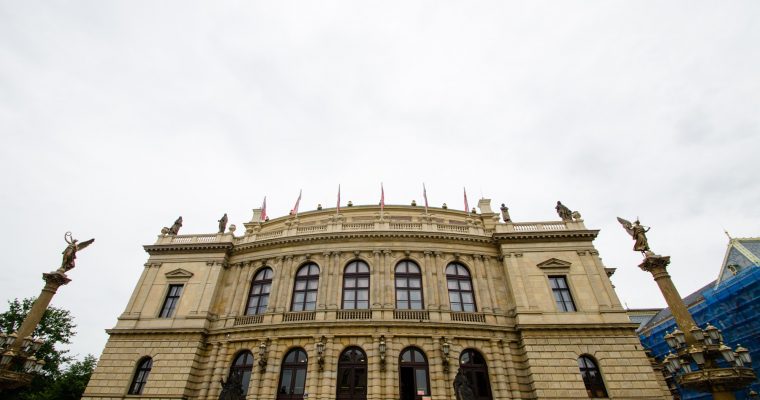This is the Rudolfinum, home to the Czech Philharmonic Orchestra and Galerie Rudolfinum, a contemporary art gallery. It sits on one side of the famous Chain Bridge, and with its stern facade looks rather like a municipal administrative building. In fact it had been repurposed as such after World War I, when the newly creative Czechoslovakia used it as its parliamentary chamber. Had we not joined a walking tour, I may not have paid much attention to the building at all. But the tour guide told us a story that I found fascinating.
When Czechoslovakia was occupied by the Germans during World War II, the Rudolfinum was turned back into a concert hall, since, well, the country no longer needed a parliament. The Reichsprotektor for the region was Reinhard Heydrich, possibly one of the most hated and feared member within the Nazi ranks. He was also known for his love and talent for music. His father had been a German nationalist who started a music conservatory in Halle, which was destroyed by the financial devastation following Germany’s loss in World War I. The story goes that when Heydrich arrived at the Rudolfinum, he loved the building and its history as a conservatory, but did not like the fact that the statues on top included one of Felix Mendelssohn-Bartholdy, who was Jewish. However, when workers went up to bring down the statue, they could not tell which one was Mendelssohn, and ended up taking down Richard Wagner’s statue, due to his rather prominent nose. Richard Wagner, by the way, was known for his anti-semitism and used by the Nazis as propaganda.
The story, it turned out, was not real, but based on a novel written by Czech author Jiri Weil in 1960. While Mendelssohn is indeed still on the roof of the Rufolfinum, Wagner had never been there in the first place. Reality was much more dramatic than the story though. Reinhard Heydrich was assassinated in Prague in 1942 by two British trained Czech operatives, Jan Kubiš and Jozef Gabčík. After they successfully injured Heydrich, the duo hid in a cathedral, but were betrayed by a fellow Czech operative. Eight hundred SS and Gestapo members surrounded the church, and the two soldiers committed suicide. Besides killing the two assassins’ immediate supporters, Hitler ordered the murder of all males over the age of 16 in the villages of Lidice and Ležáky, as well as the murder of all the women in Ležáky. The towns were burnt and leveled. Two months later, the secret plans of exterminating Jews through death camps was formally given the name Operation Reinhard, to commemorate Heydrich. When Operation Reinhard ended in November 1943, two million people had been exterminated.
When I heard the story for the first time, I for whatever reason keep thinking of a scene from The Pianist, the memoir by the Jewish pianist Władysław Szpilman. After being discovered by a German officer while hiding in Warsaw, Szpilman was offered the opportunity to play the piano. He picked Chopin’s Nocturne in C sharp minor. For almost a year, the officer, Wilm Hosenfeld, supplied Szpilman with food and kept him safe until the end of the German occupation. Despite efforts by Szpilman to save him, Hosenfeld would later die as a Soviet POW after the war, most likely as a result of torture.
The Chopin piece is also sometimes called Reminisce.


Leave a Reply